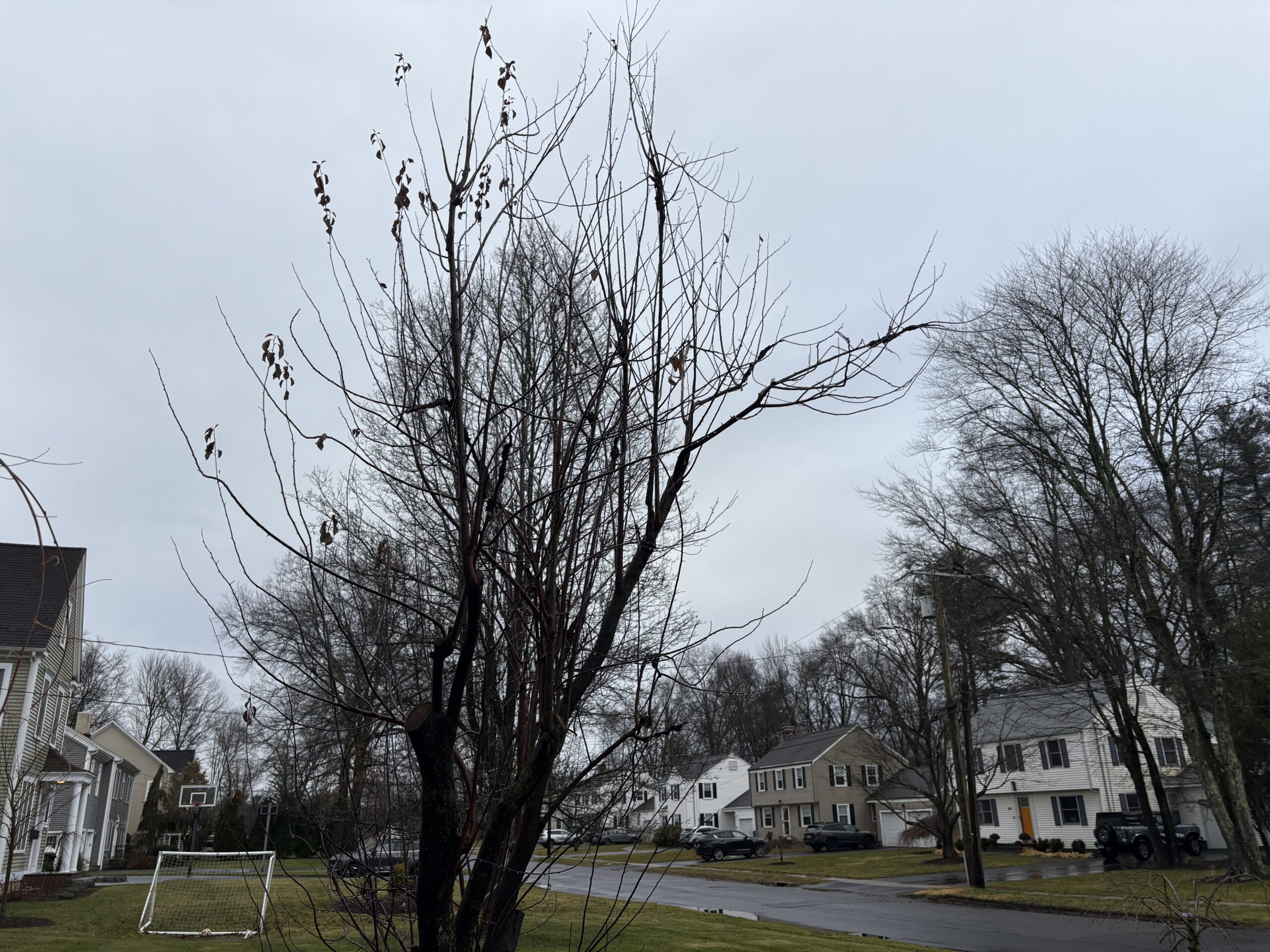An Inside Look at West Hartford’s Disaster Drill

Audio By Carbonatix

From left: Command staff members Bob McCue, Deputy Emergency Management Director; Fire Chief Greg Priest; Assistant Fire Chief Hugh O'Callaghan. West Hartford Host Community Reception Center Drill. May 13, 2023. Photo credit: Ronni Newton
The West Hartford Fire Department and Office of Emergency Management conducted a full-scale disaster drill Saturday for the town’s role as a host community reception center in the event of an incident at the Millstone Nuclear Power Plant.
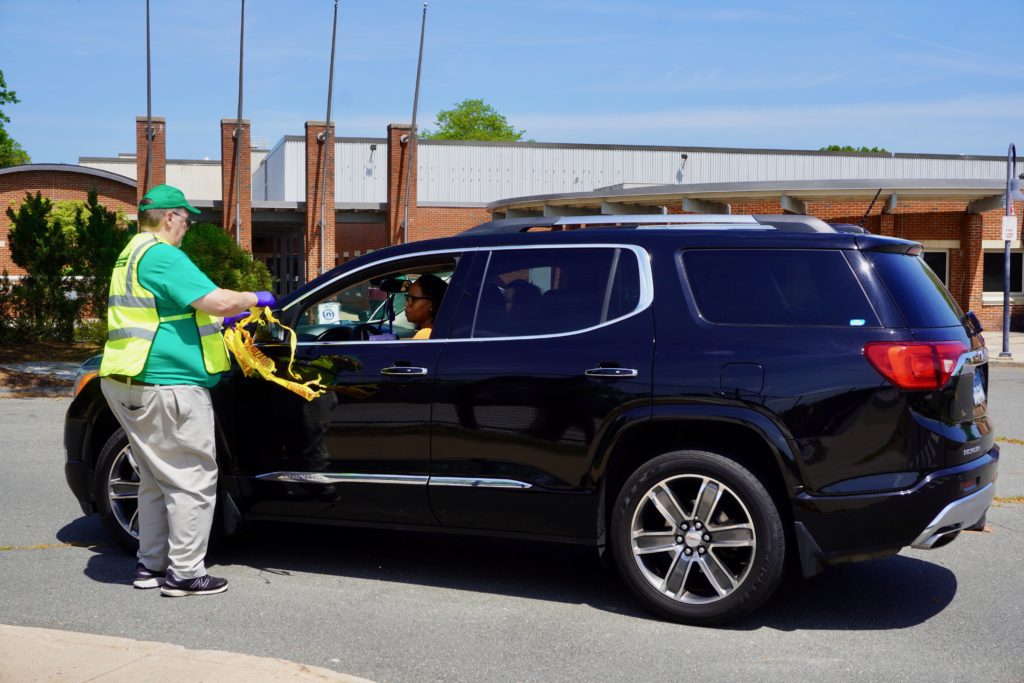
CERT member Keith Griffin ties yellow tape to the window of a car indicating that it needs to be decontaminated, and directs the driver where to park. West Hartford Host Community Reception Center Drill. May 13, 2023. Photo credit: Ronni Newton
By Ronni Newton
The largest full-scale disaster drill in West Hartford’s history took place Saturday, with members of the town’s emergency management team – including many representatives of the all-volunteer Community Emergency Response Team (CERT) – testing the process of setting up Conard High School to greet as many as 3,500 evacuees from Montville and Waterford who may have to evacuate in the event of an incident at the Millstone Nuclear Power Plant.
It’s not likely to happen, but emergency management requires preparedness, and West Hartford is in the final stages of becoming an official Host Community Reception Center (CRC), taking over from East Hartford which until 2021 was the CRC for Montville and Waterford. A practice drill and training exercise was held in mid-April, and Saturday’s drill was evaluated by FEMA – the last step before the town’s status becomes official.
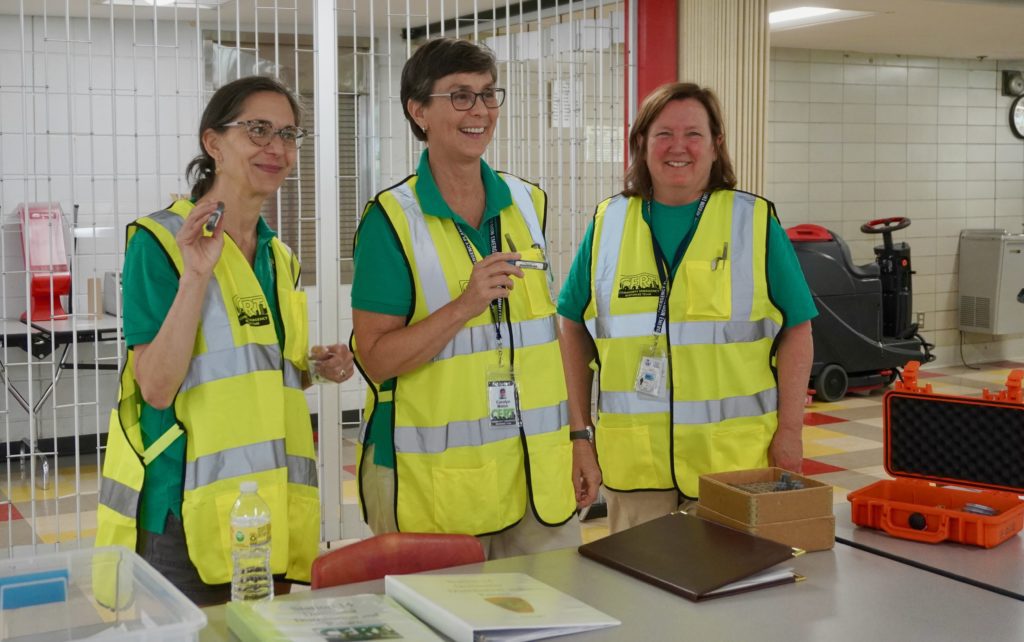
CERT members (from left) Kim DeMichelle, Carolyn Mason, and Carolyn Murphy completed their training on the use of dosimeters, including a device that provides an immediate indication of the level of roentgens by holding it up to the light. West Hartford Host Community Reception Center Drill. May 13, 2023. Photo credit: Ronni Newton
“The first and most basic premise is that we hope and expect that all safeguards are in place to prevent the need to ever activate the Host Community Reception Center,” said West Hartford Fire Chief Greg Priest, who also serves as Director of Emergency Management for the town. “Should an emergency happen, howevever, it would affect us all. We want to be prepared, not just for our community, but for the citizens of Montville and Waterford. Today’s drill is the culmination of a tremendous amount of partnership, planning, and cooperation with numerous stakeholders at the local, state, and federal levels,” said Priest.
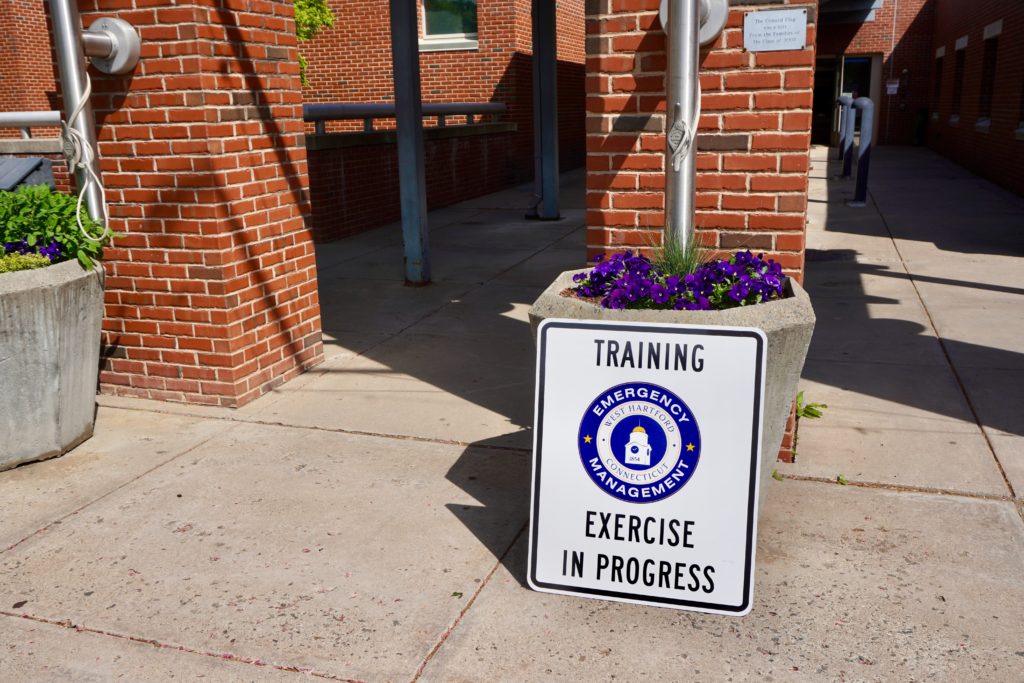
West Hartford Host Community Reception Center Drill. May 13, 2023. Photo credit: Ronni Newton
Conard’s parking lots, cafeterias, and gym were all in use for various parts of the drill – which after several hours of set-up officially began at 12:10 p.m.
“It’s an exercise in emergency management in a larger way,” said Brenda Bergeron, deputy commissioner of the State Department of Emergency Management and Homeland Security. “In any disaster you’re going to have a situation where people need food, they need shelter … there’s mental health assistance, there’s reunification assistance. It’s really that whole community approach to helping people come that have come through something very distressing.”
Michael Firsick, a physicist and office director of the Connecticut Department of Energy and Environmental Protection’s Bureau of Air Management Radiation Division, said the chance of a disaster is slim because design of the nuclear power plants in the U.S. – which keeps all of the nuclear material contained – would not allow for an accident like Chernobyl. “There has not been a large scale release from a nuclear power plant in America since Three Mile Island in 1979,” he said, and even with that most of the material was gaseous, not particulate.
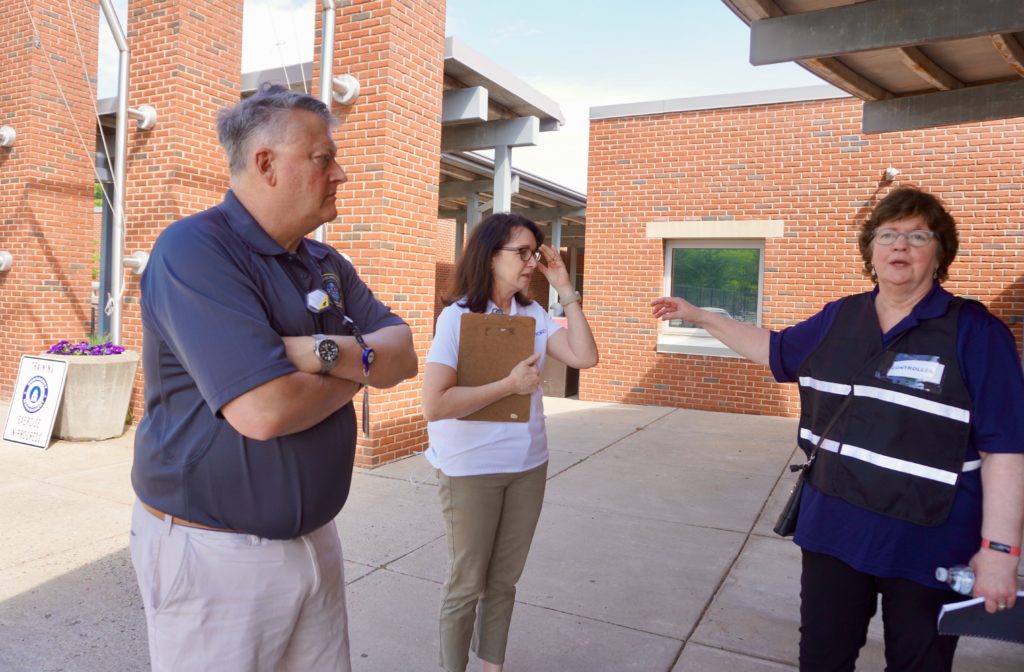
From left: Michael Firsick, Director of DEEP’s Bureau of Air Management Radiation Division, West Hartford Public Relations Specialist Renée McCue, and Brenda Bergeron, Deputy Commissioner of the state Department of Emergency Management and Homeland Security. .West Hartford Host Community Reception Center Drill. May 13, 2023. Photo credit: Ronni Newton
There has never been any release from Millstone, Firsick said.
During Saturday’s simulation, the first “evacuees” (role players from the Medical Reserve Corps) pulled into the driveway of the parking lot near Conard’s tennis courts, and initially drove through a portal monitor equipped with a radiation detector that would set off an alarm if the vehicle was contaminated, Firsick said. The level of contamination would not be a public safety risk, he said, but the vehicles would still need to be left in a designated area and decontaminated by members of the West Hartford Fire Department.
There’s a separate parking lot for the rest of the cars, and all vehicle occupants, including any pets they may have brought (pets are welcome at the CRC) – whether coming from a clean or contaminated vehicle – head to Conard’s small gym where they pass through a portal monitor, and if clean are given a green bracelet and permitted to go to the large gym. There they find a variety of services including counseling, distribution of potassium iodide (KI) by the West Hartford-Bloomfield Health District to protect against possible thyroid damage from radioactive iodine, and information about where they can stay if they are unable to return home for a period of time.
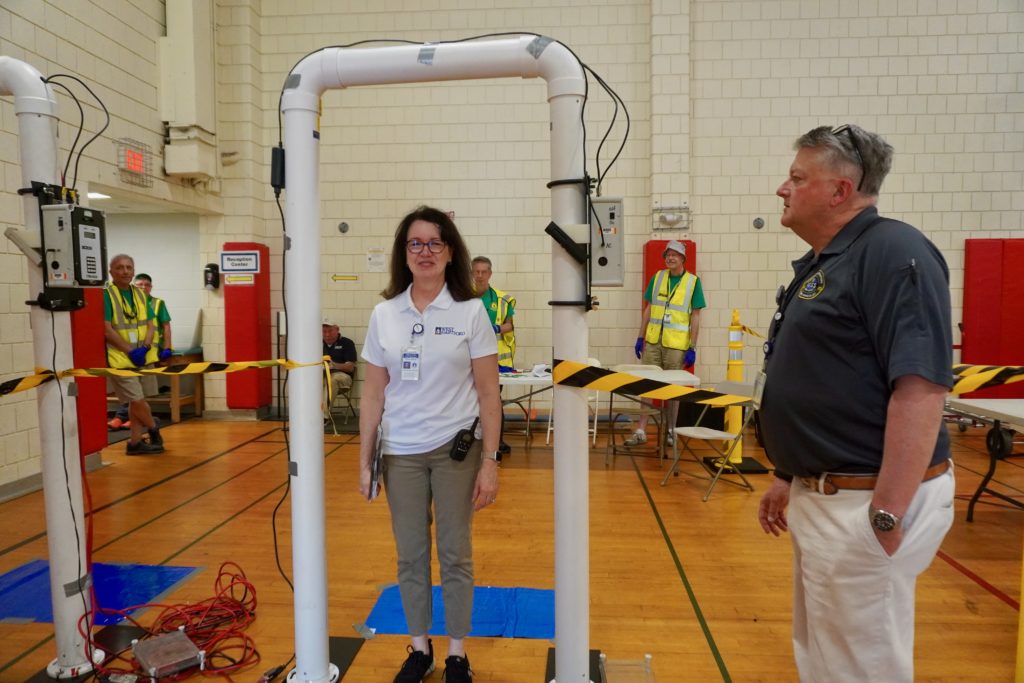
Public Relations Specialist Renée McCue shows how those arriving at the reception center are screened for contaminants. The blue mats on the ground collect dust from shoes. At right is Michael Firsick of DEEP’s Bureau of Air Management Radiation Division. West Hartford Host Community Reception Center Drill. May 13, 2023. Photo credit: Ronni Newton
The large gym is also the site of the command center for the CRC operation, and a reunification area for family members who may have gotten separated. Pets were not part of the drill, but there would be a separate space for them set aside in the gym’s lobby as well.
Those who exhibit signs of contamination head to the decon area where they first use wipes and a sink to clean themselves and then get tested again. If there are still levels of contamination detected, they head outside to the inflatable decontamination tent for a shower.
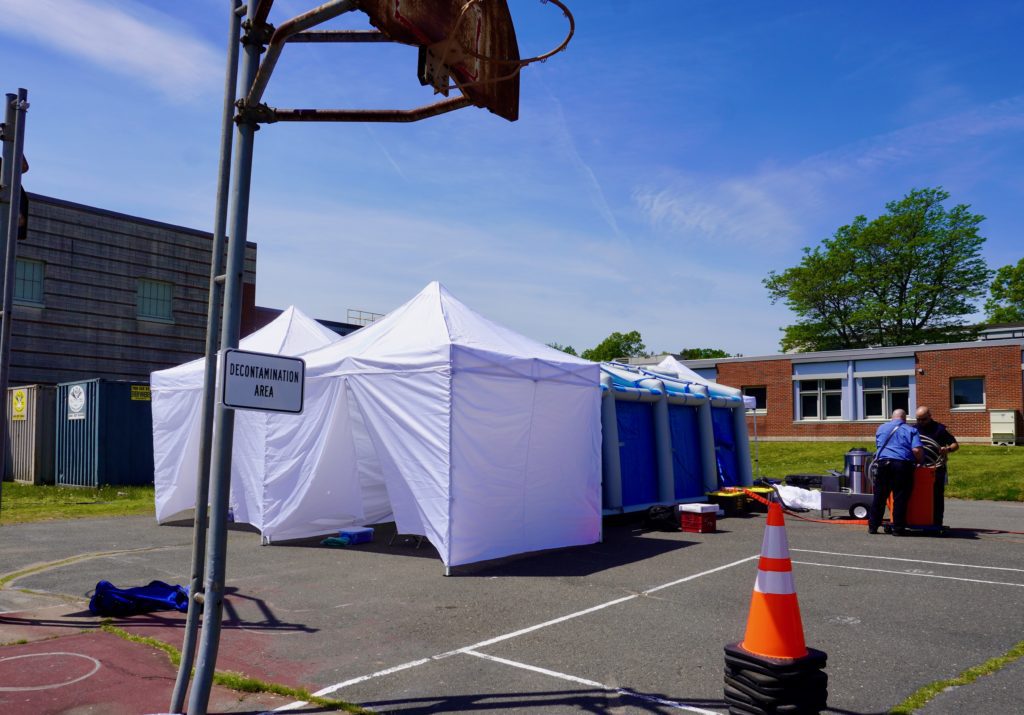
An inflatable shower was set up in the parking lot for use by those who were not fully decontaminated using wipes. West Hartford Host Community Reception Center Drill. May 13, 2023. Photo credit: Ronni Newton
The decontamination tent – which now belongs to the Town of West Hartford – was funded by a $60,000 grant from the Nuclear Safety Emergency Program (NESP) and is one of only two in the state. The town would be able to use it in the event of a chemical spill or other large scale need for decontamination.
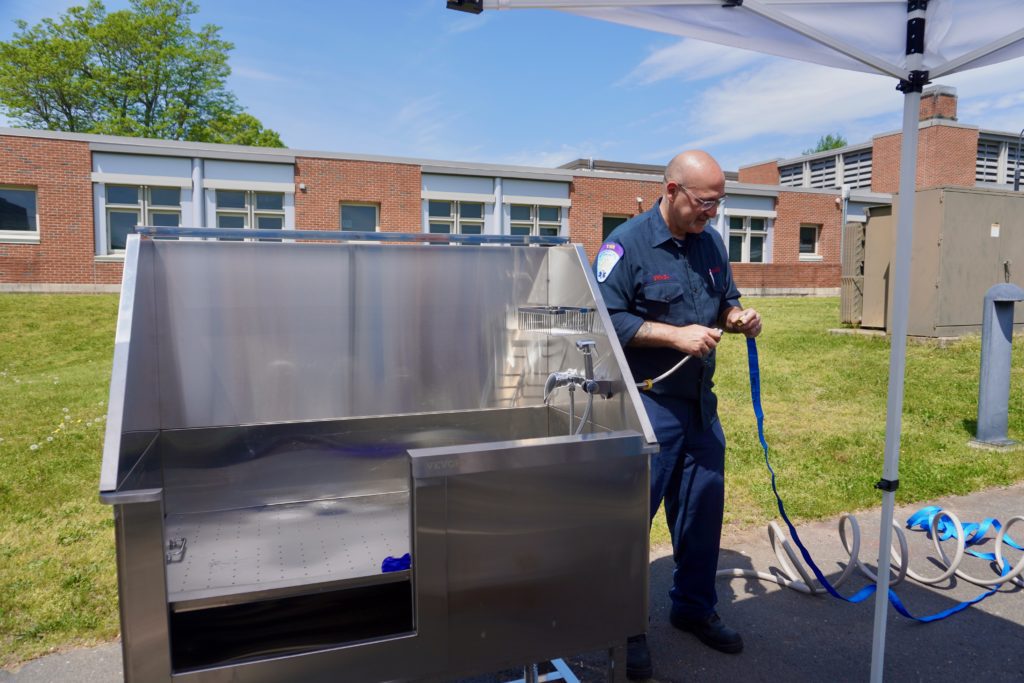
A special sink is set up for bathing animals that need decontamination. West Hartford Host Community Reception Center Drill. May 13, 2023. Photo credit: Ronni Newton
No one is permitted to enter the large gym until they are “clean” according to the portal monitors.
There are translators to help out with those who cannot speak English, and accommodations for those who need mobility assistance or have other problems with accessibility.
Residents who live within 10 miles of a nuclear facility are in the Emergency Planning Zone (EPZ), and are regularly instructed on what to do in the event an incident occurs. Distribution of KI takes place in those areas on a regular basis so residents are prepared.
Host CRCs are farther away, and part of a larger scale response plan and undergo drills on a regular, although less frequent basis.
“I really have to give a shout out to West Hartford for the Community Emergency Response Team,” Bergeron said. The nearly 200 volunteers “are ready today, but they help all the time in smaller incidents, in real incidents.”
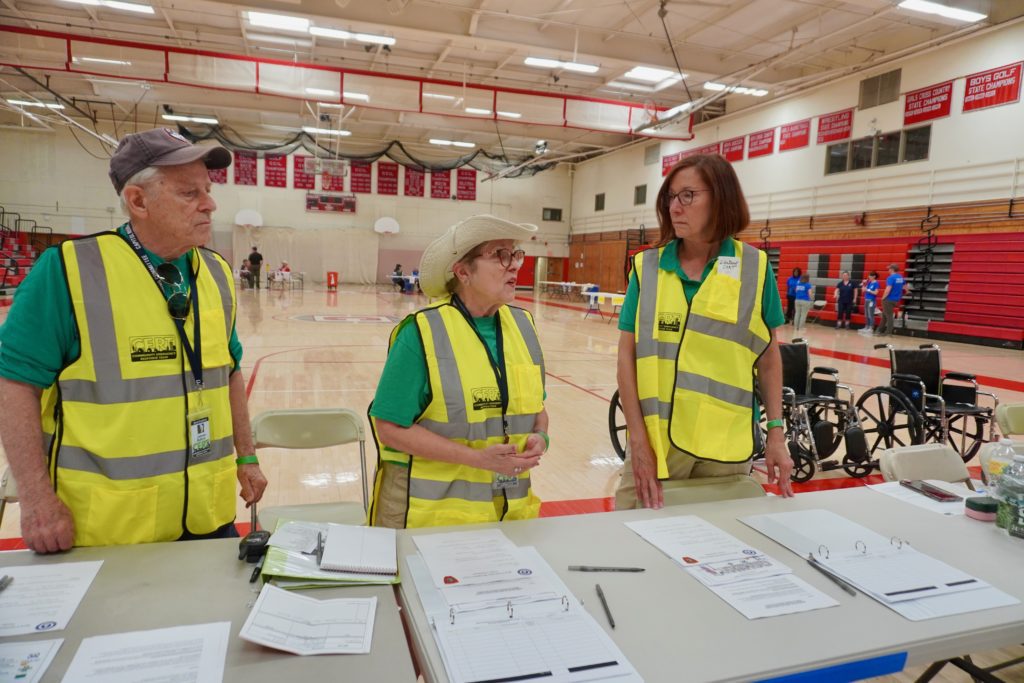
CERT members, all volunteers, speak about their roles in the reception center. West Hartford Host Community Reception Center Drill. May 13, 2023. Photo credit: Ronni Newton
West Hartford was being evaluated Saturday on going from notification to readiness.
Ingrid Pierce serves as the Technological Hazards Branch Chief and Regional Advisory Council Chair for FEMA Region 1, and was among the evaluators on Saturday. She said she was so appreciative of all of the volunteers who assisted with the drill. “It’s really impressive to see all the community engagement,” she said.
Pierce said the drill was not evaluated on a pass/fail basis, and the criteria is set out in advance. “The purpose of doing this is to make sure the town is able to implement their plans. We always try to work with them to see if there are any areas for improvement,” she said.
According to Bergeron, the tracking that is done as part of setting up a CRC is also valuable if there is a need to request a major disaster declaration, when FEMA needs detailed breakdown of all costs and activities.
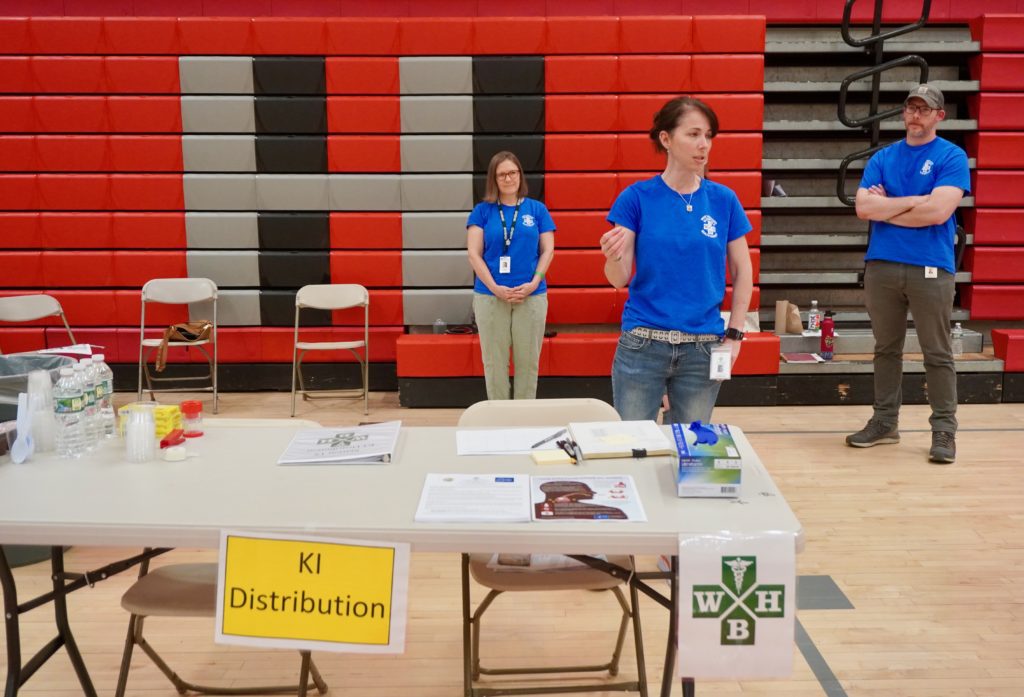
Melissa Marquis, an emergency response specialist with the West Hartford-Bloomfield Health District, shares details of the KI distribution that would take place. West Hartford Host Community Reception Center Drill. May 13, 2023. Photo credit: Ronni Newton
There were about 150 people on site at Conard on Saturday for the drilll, representing seven town departments and eight outside agencies including FEMA, State Department of Emergency Management & Homeland Security, American Red Cross, Connecticut Department of Mental Health & Addiction Services, and Dominion Energy.
“I could not be more pleased and proud of the team that has come together to improve the preparedness of not just West Hartford but also the region and state,” Priest said. “It’s hard to recognize and thank every individual and organization involved but I would be remiss not to specifically acknowledge and thank the our Office of Emergency Management and volunteer CERT members who have donated a tremendous amount of time and effort to make this a successful endeavor. We look forward to building on the many partnerships that have been established and improving preparedness for a nuclear event but also to take this experience and translate it into readiness for other types of community emergencies or events.”
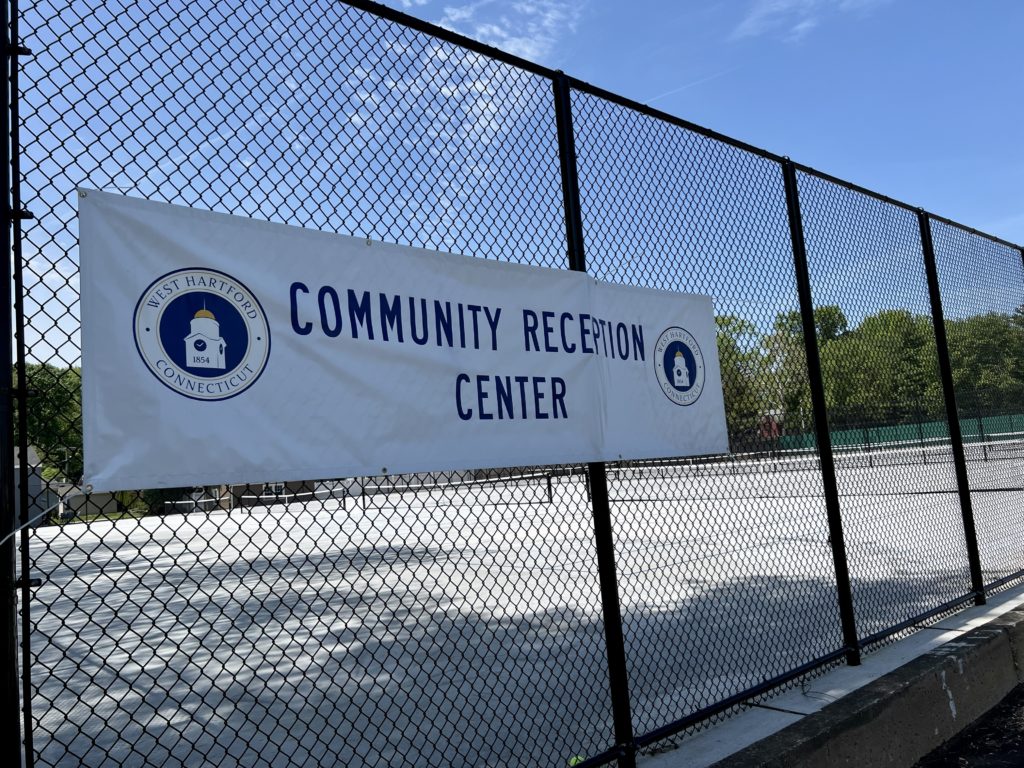
West Hartford Host Community Reception Center Drill. May 13, 2023. Photo credit: Ronni Newton
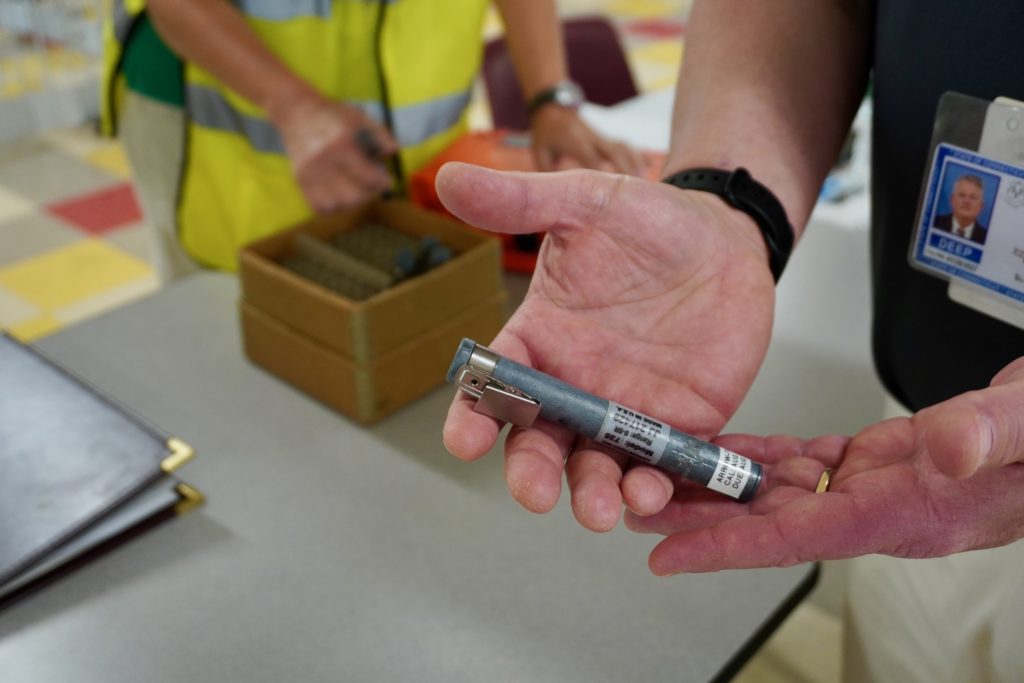
Pocket chamber dosimeter West Hartford Host Community Reception Center Drill. May 13, 2023. Photo credit: Ronni Newton
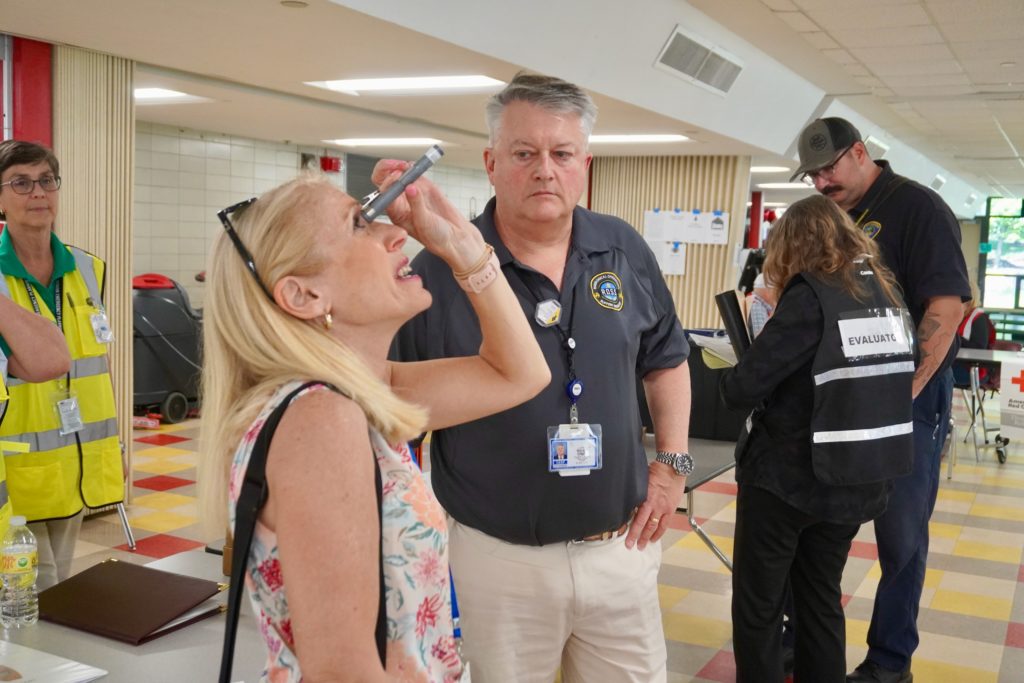
Testing out the pocket chamber dosimeter that when held up to the lights shows the level of roentgens. West Hartford Host Community Reception Center Drill. May 13, 2023. Photo credit: Renée McCue
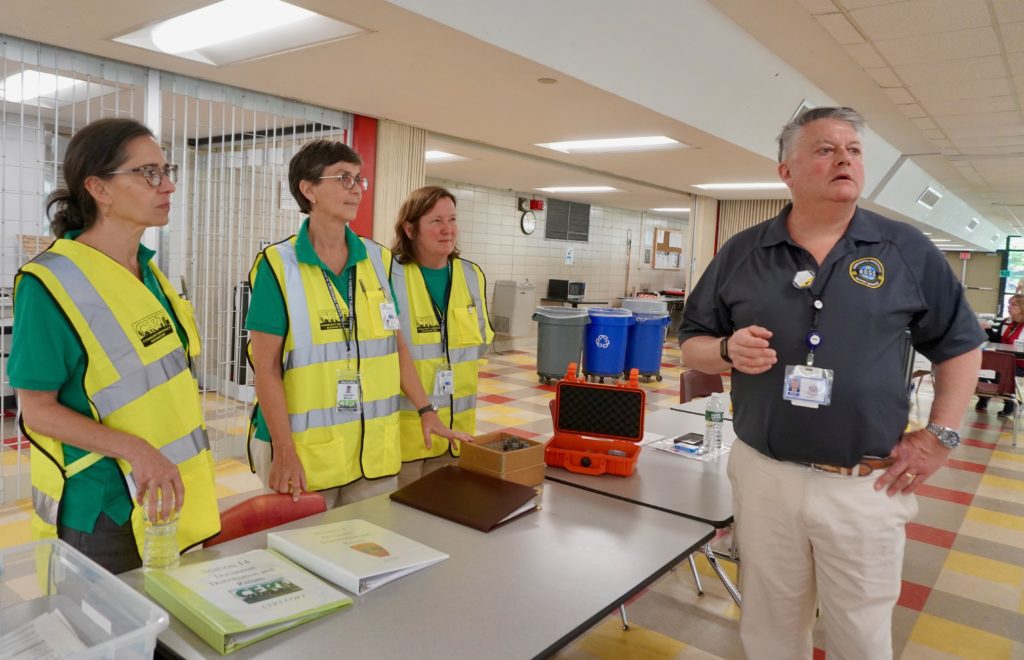
CERT members completed their training on the use of dosimeters, including a device that provides an immediate indication of the level of roentgens by holding it up to the light. West Hartford Host Community Reception Center Drill. May 13, 2023. Photo credit: Ronni Newton
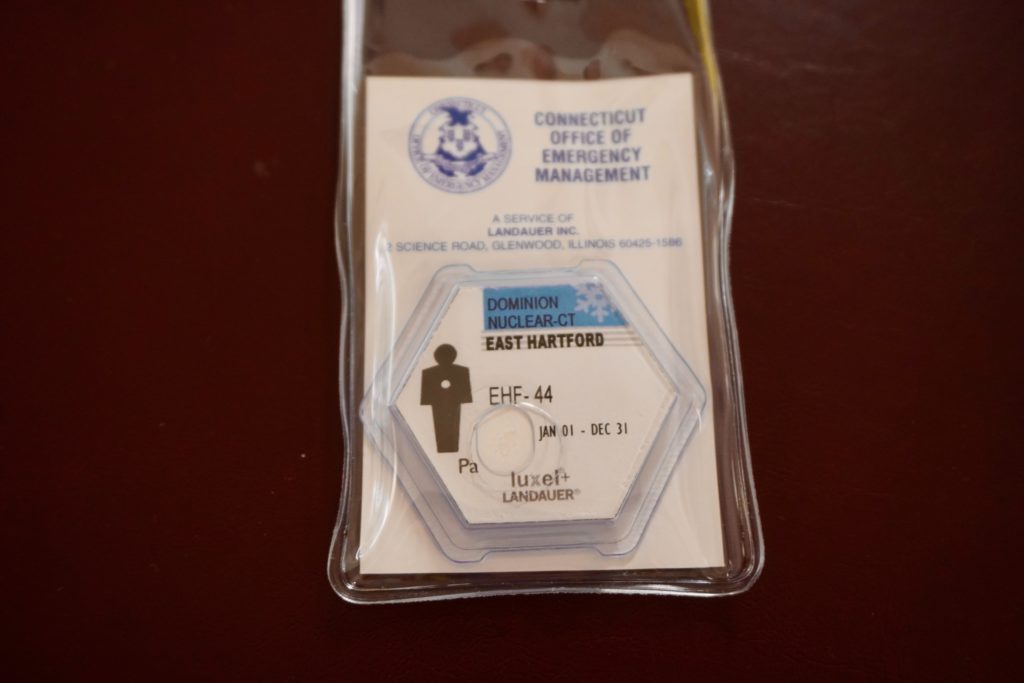
An optically-stimulated dosimeter is used to measure levels of radiation. West Hartford Host Community Reception Center Drill. May 13, 2023. Photo credit: Ronni Newton
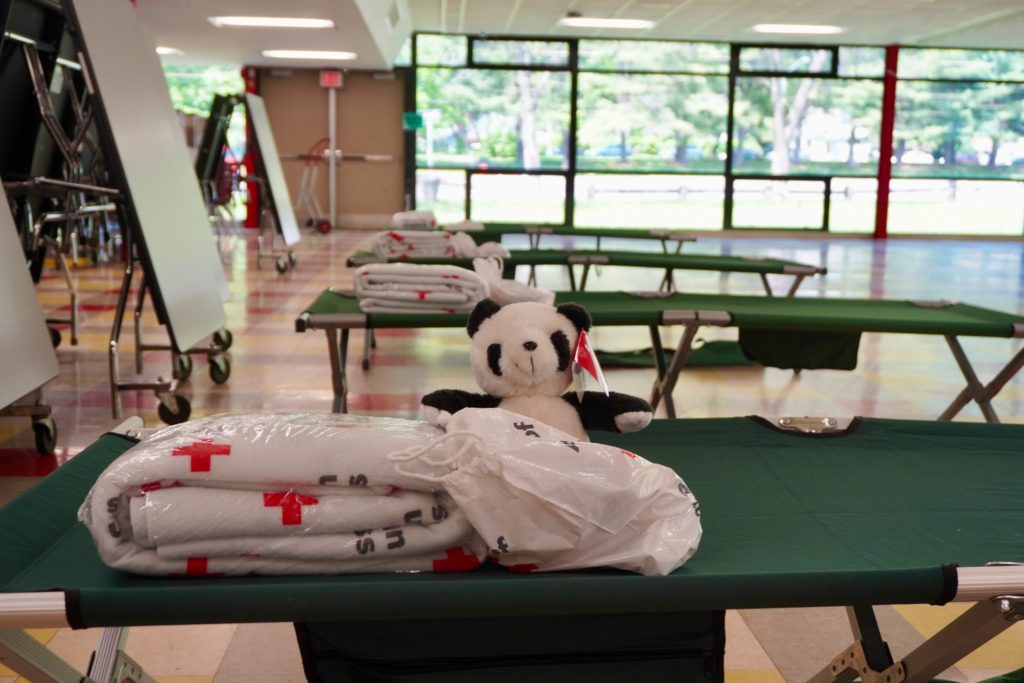
American Red Cross shelter in Conard cafeteria. West Hartford Host Community Reception Center Drill. May 13, 2023. Photo credit: Ronni Newton
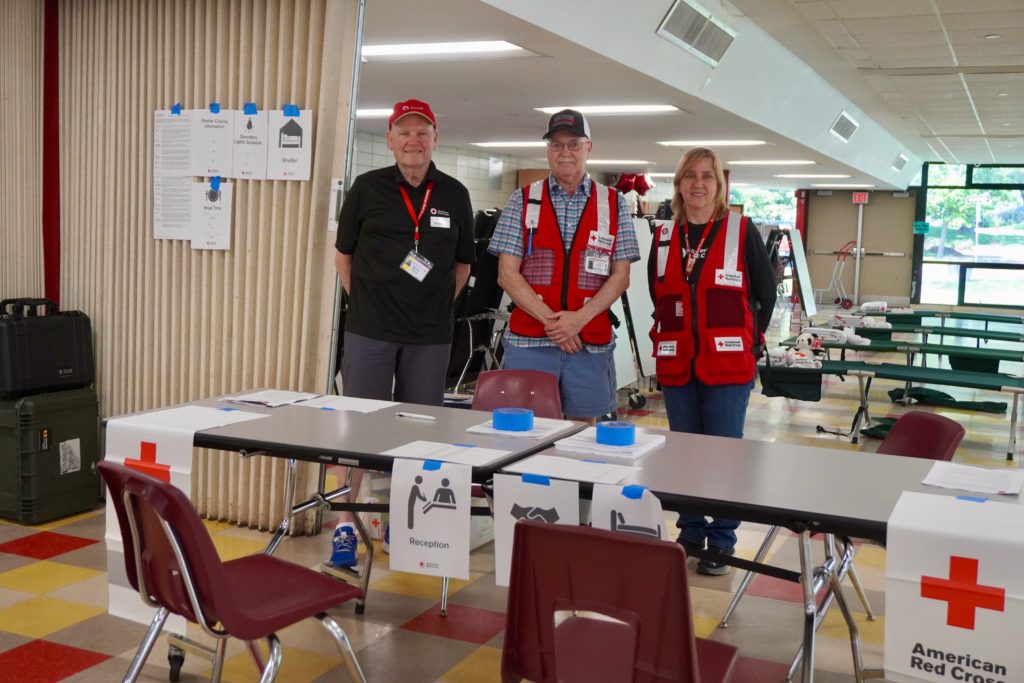
Representatives of the American Red Cross operate a shelter area in the Conard cafeteria. West Hartford Host Community Reception Center Drill. May 13, 2023. Photo credit: Ronni Newton
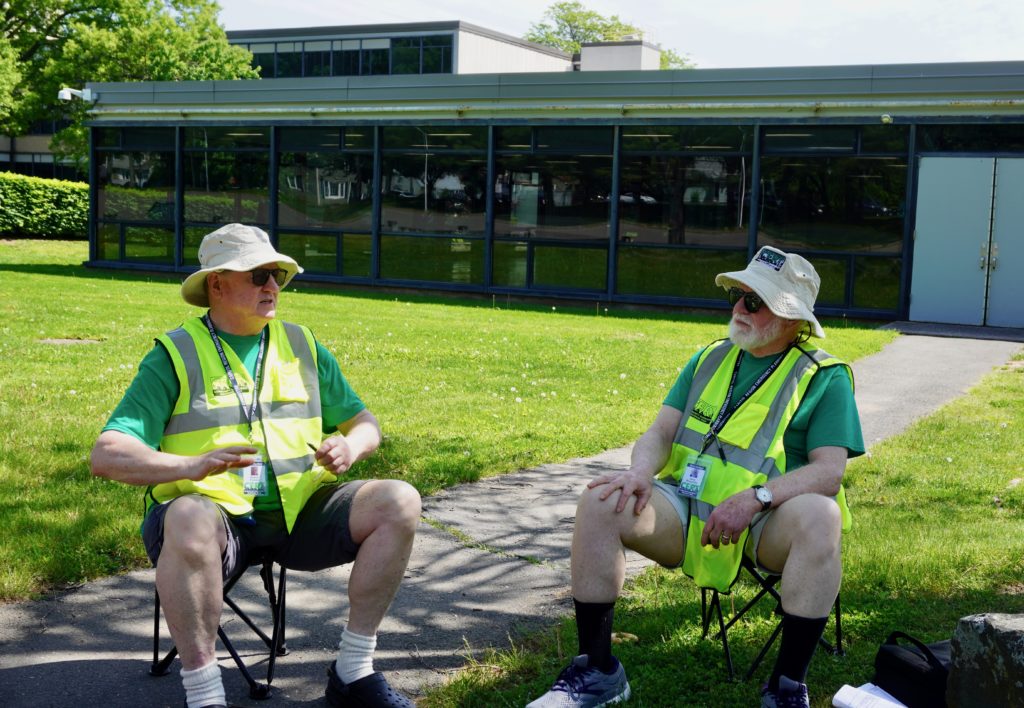
CERT members Robert Painter (left) and Jerry Benjamin direct people were to park. West Hartford Host Community Reception Center Drill. May 13, 2023. Photo credit: Ronni Newton
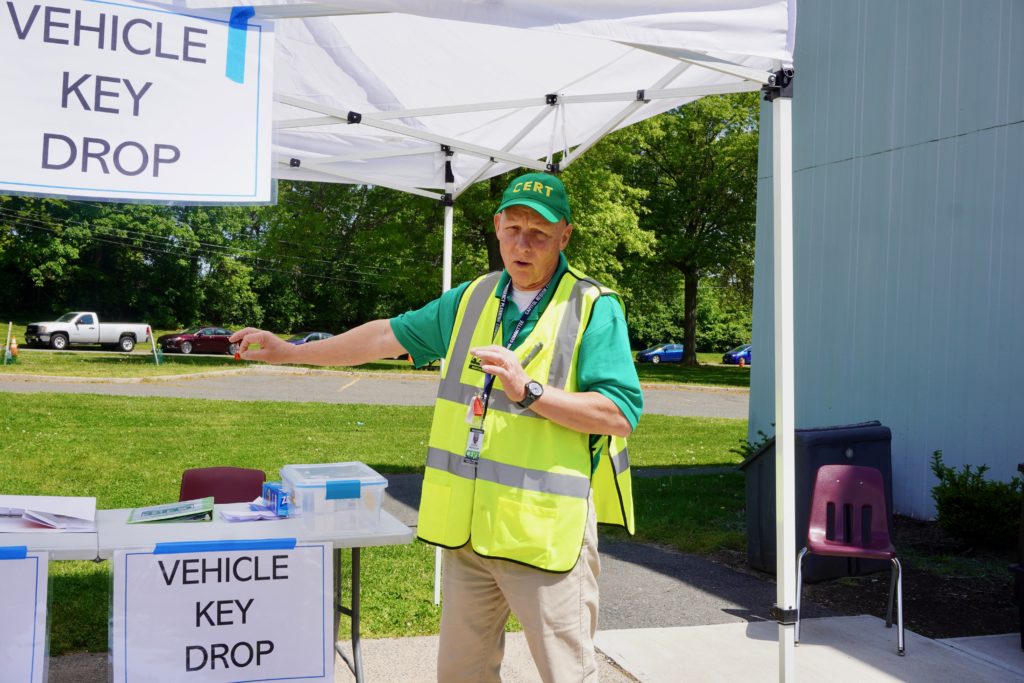
CERT member Gordon McKenzie reviews the process of dealing with keys and contaminated vehicles. West Hartford Host Community Reception Center Drill. May 13, 2023. Photo credit: Ronni Newton
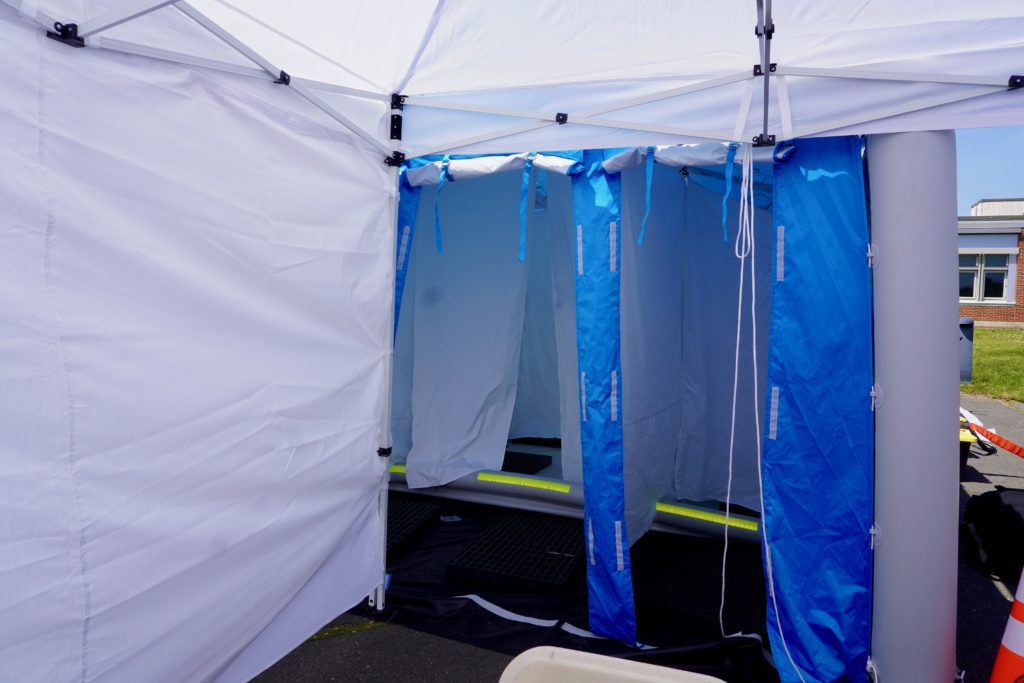
Inflatable shower. West Hartford Host Community Reception Center Drill. May 13, 2023. Photo credit: Ronni Newton
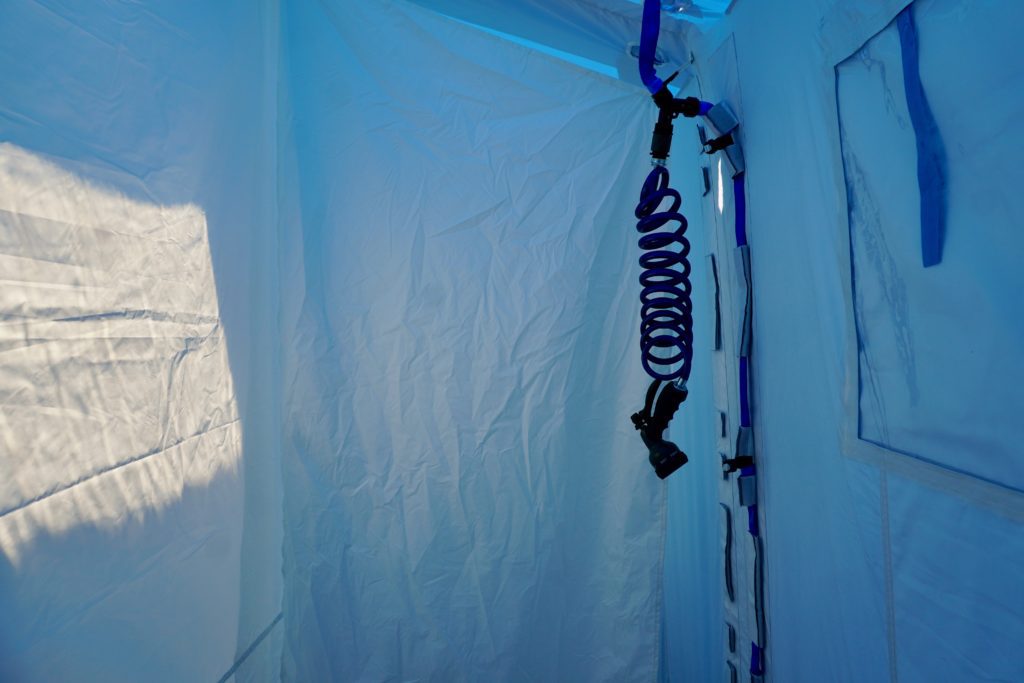
Interior of the inflatable shower. West Hartford Host Community Reception Center Drill. May 13, 2023. Photo credit: Ronni Newton
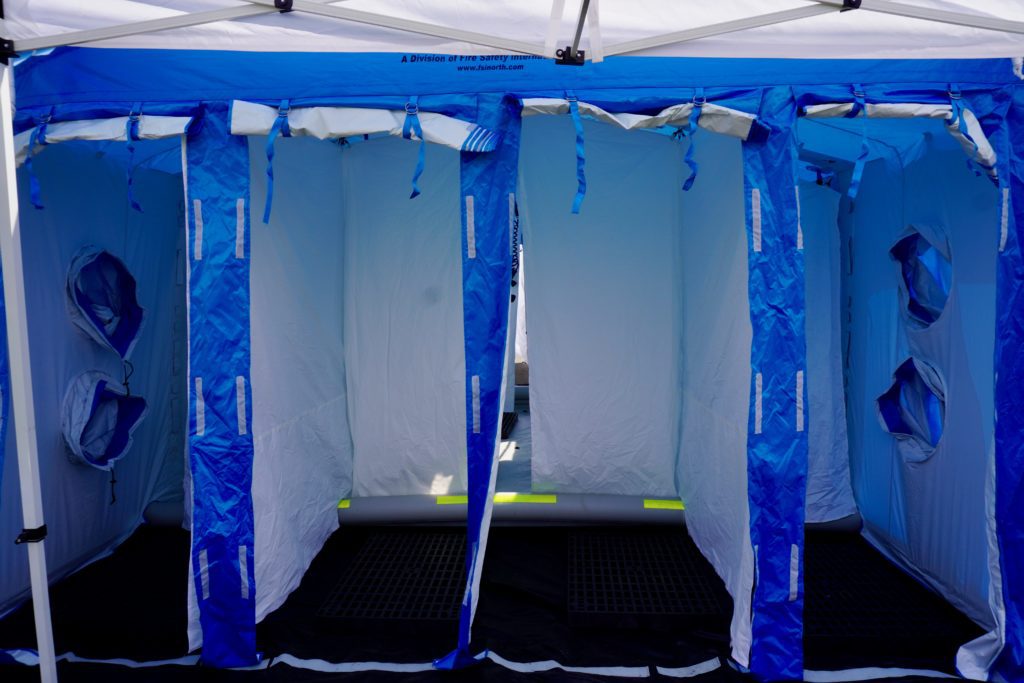
Inflatable showers are used for further decontamination if wipes are not effective. West Hartford Host Community Reception Center Drill. May 13, 2023. Photo credit: Ronni Newton
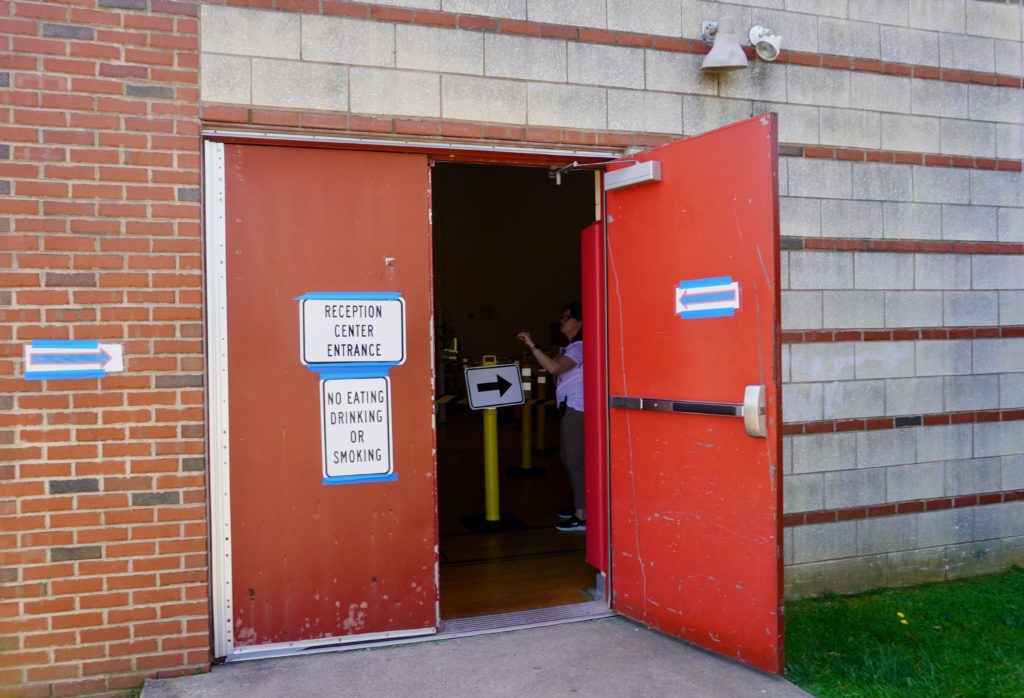
West Hartford Host Community Reception Center Drill. May 13, 2023. Photo credit: Ronni Newton
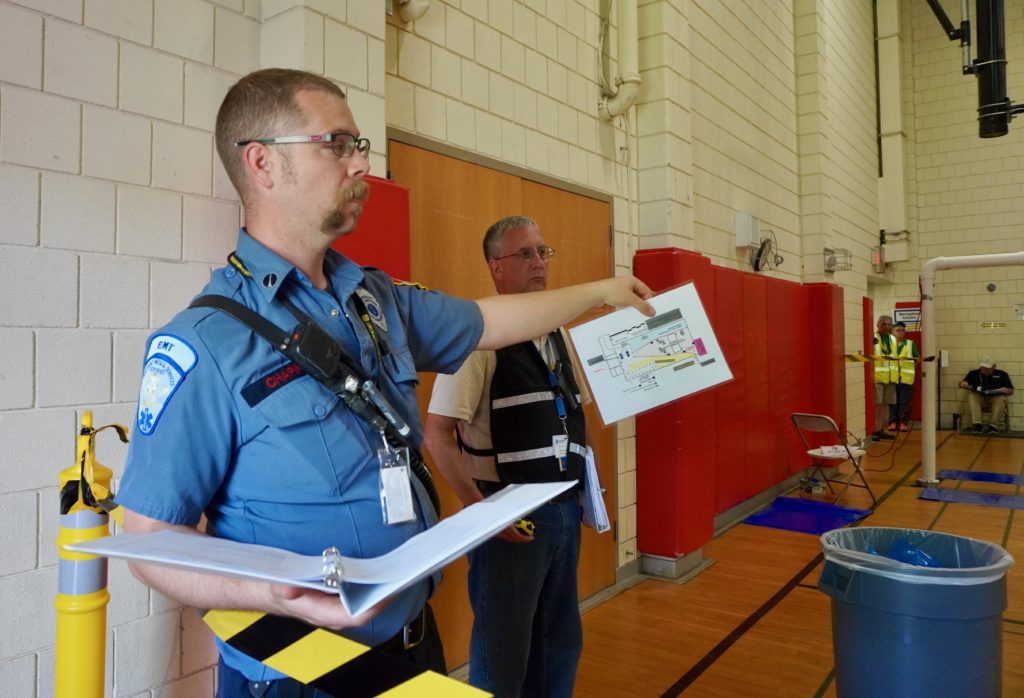
West Hartford Host Community Reception Center Drill. May 13, 2023. Photo credit: Ronni Newton
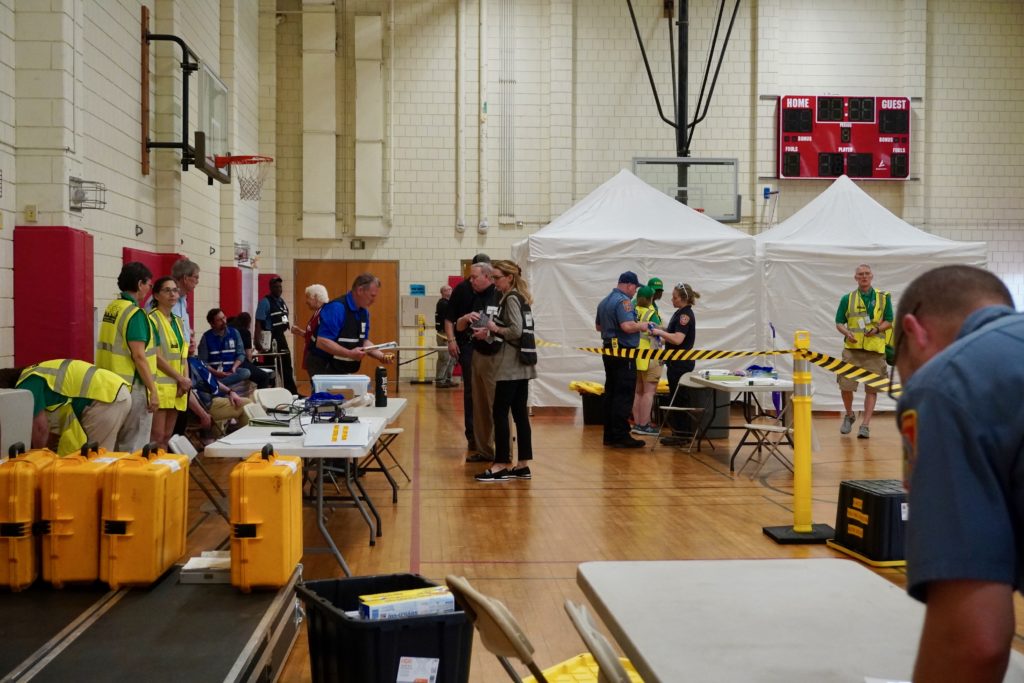
Evacuees who are determined to be contaminated will first be given wipes by members of the West Hartford Fire Department. West Hartford Host Community Reception Center Drill. May 13, 2023. Photo credit: Ronni Newton
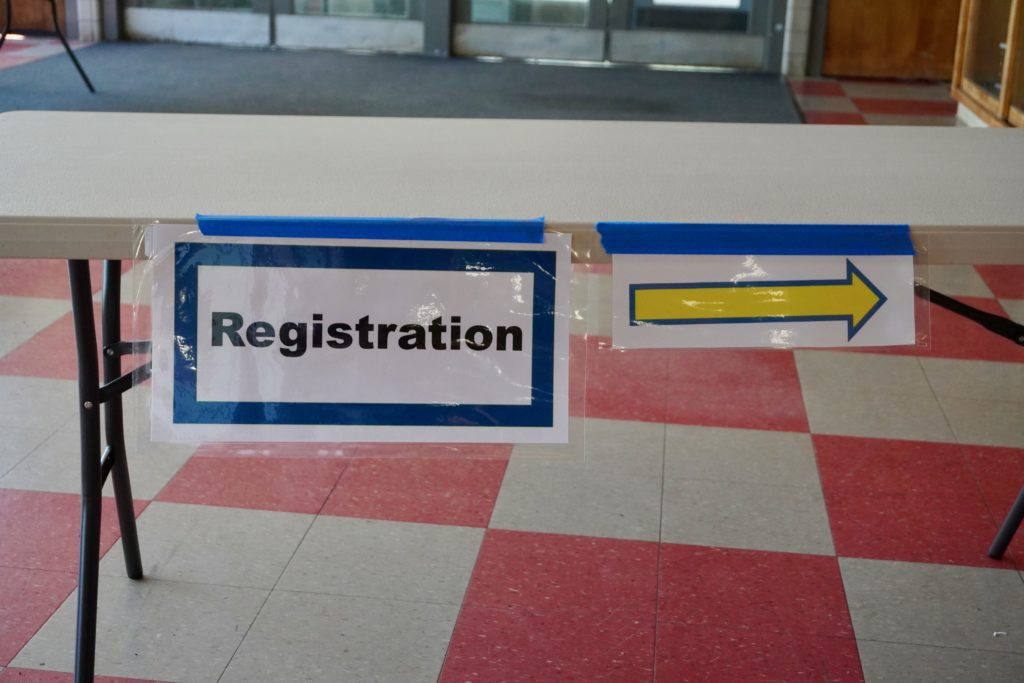
West Hartford Host Community Reception Center Drill. May 13, 2023. Photo credit: Ronni Newton
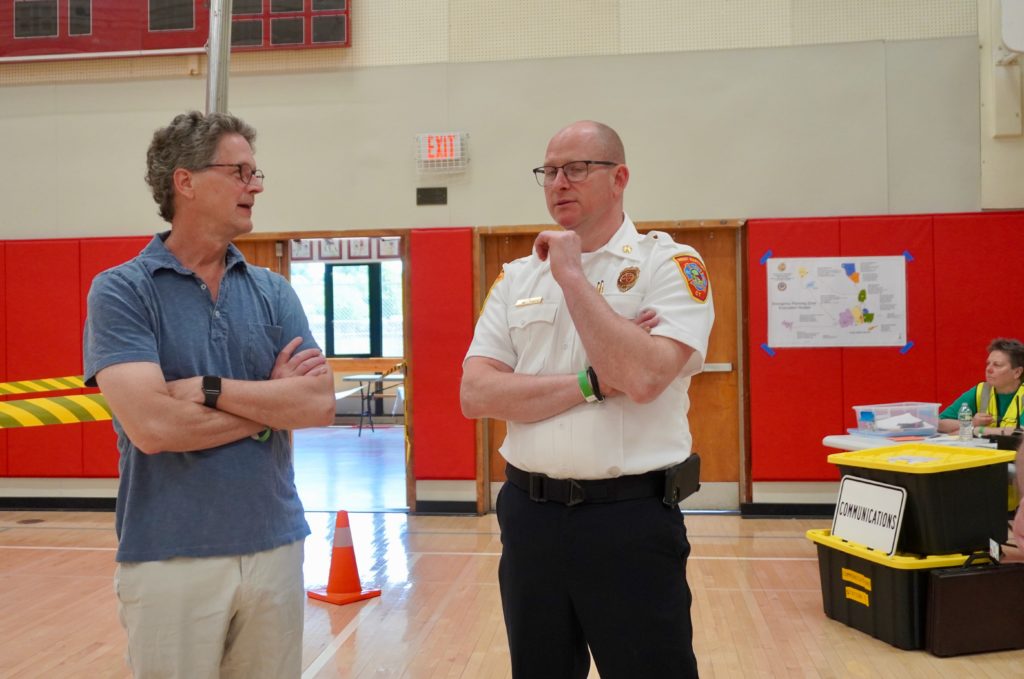
Fire Chief Greg Priest (right) is the director of Emergency Management for the town. He chats with Town Manager Rick Ledwith at the West Hartford Host Community Reception Center Drill. May 13, 2023. Photo credit: Ronni Newton
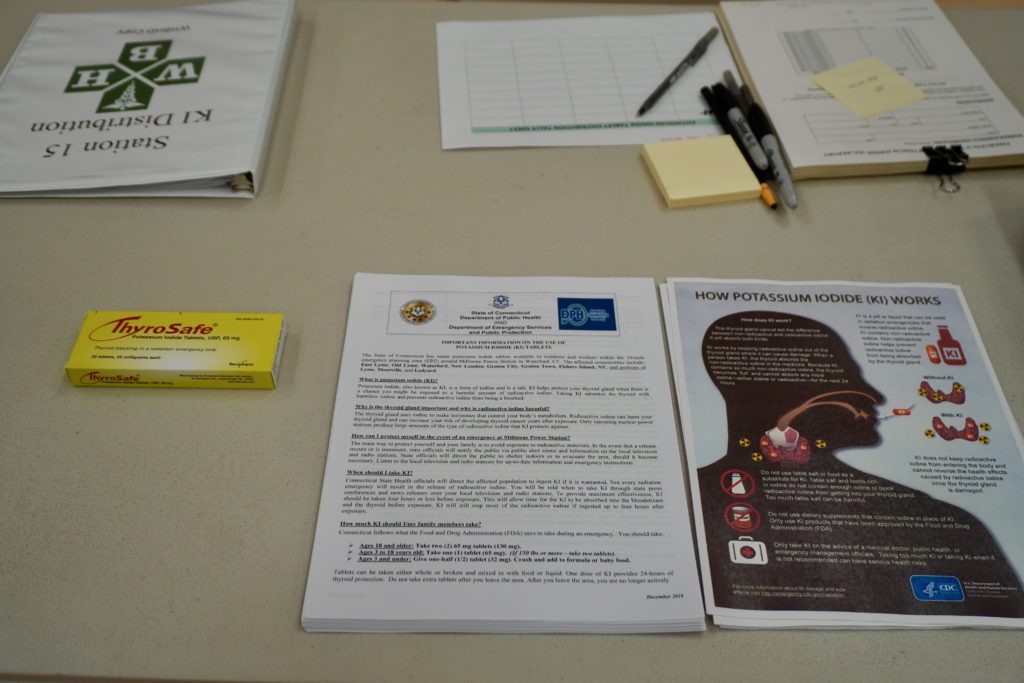
Potassium Iodide (KI) will be available at the Community Reception Center to those who would like it. KI protects the thyroid glad from radioactive iodine exposure. West Hartford Host Community Reception Center Drill. May 13, 2023. Photo credit: Ronni Newton
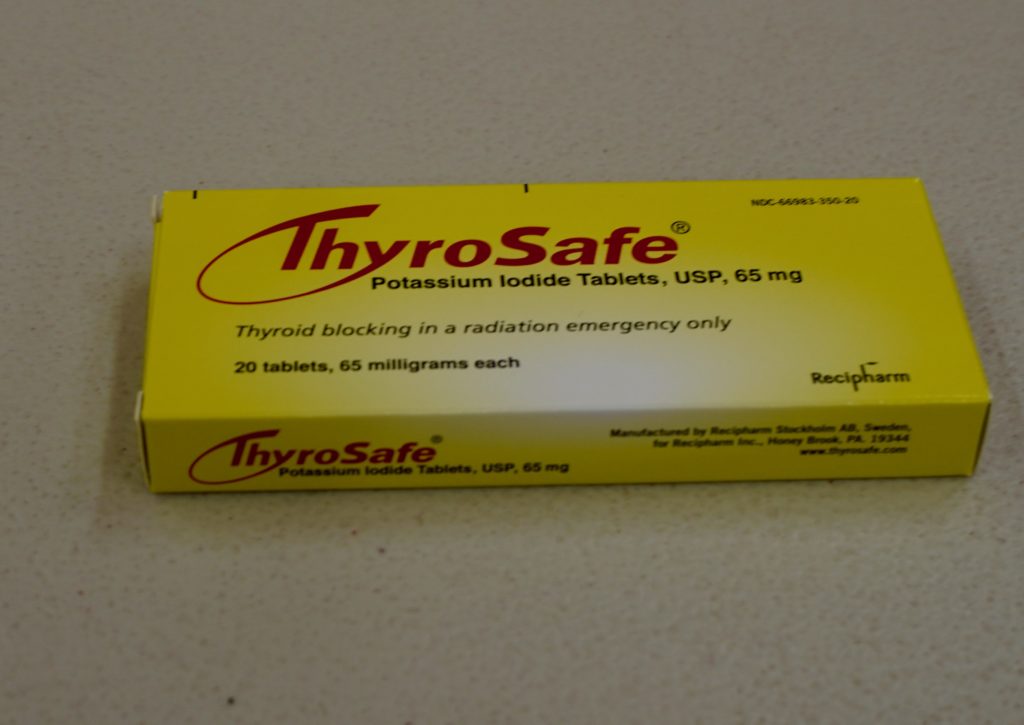
Potassium Iodide (KI) will be available at the Community Reception Center to those who would like it. KI protects the thyroid glad from radioactive iodine exposure. West Hartford Host Community Reception Center Drill. May 13, 2023. Photo credit: Ronni Newton
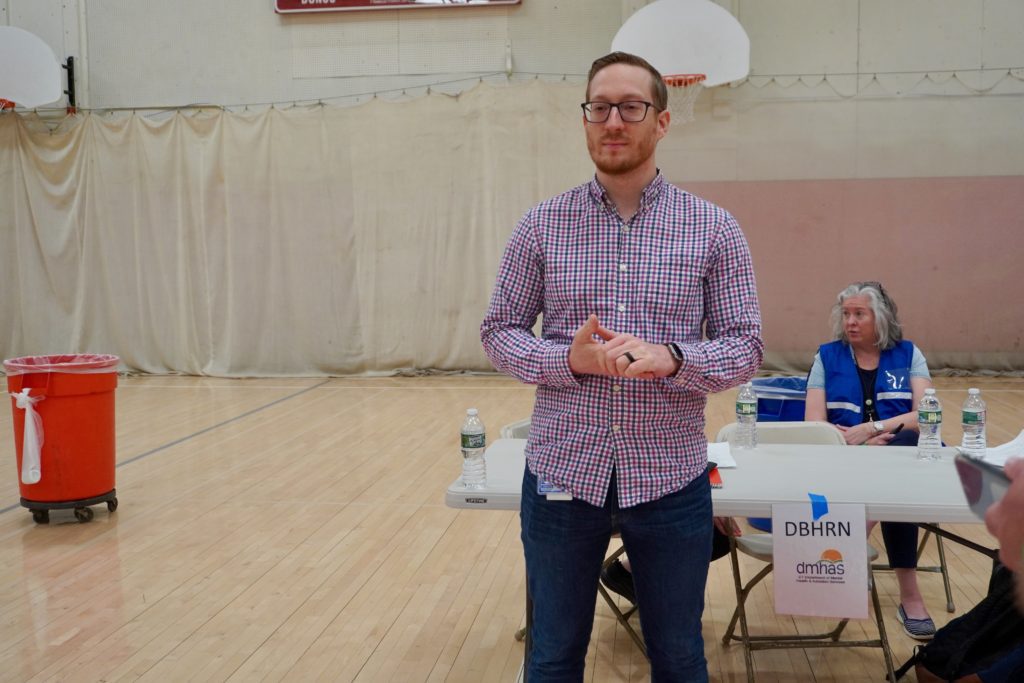
West Hartford Host Community Reception Center Drill. May 13, 2023. Photo credit: Ronni Newton
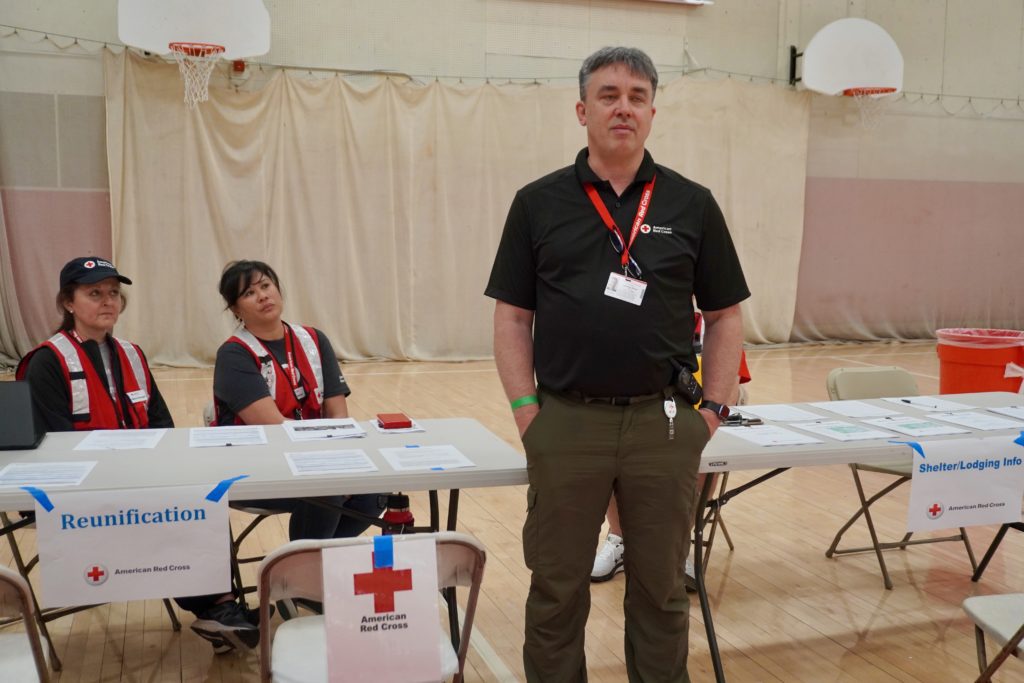
West Hartford Host Community Reception Center Drill. May 13, 2023. Photo credit: Ronni Newton
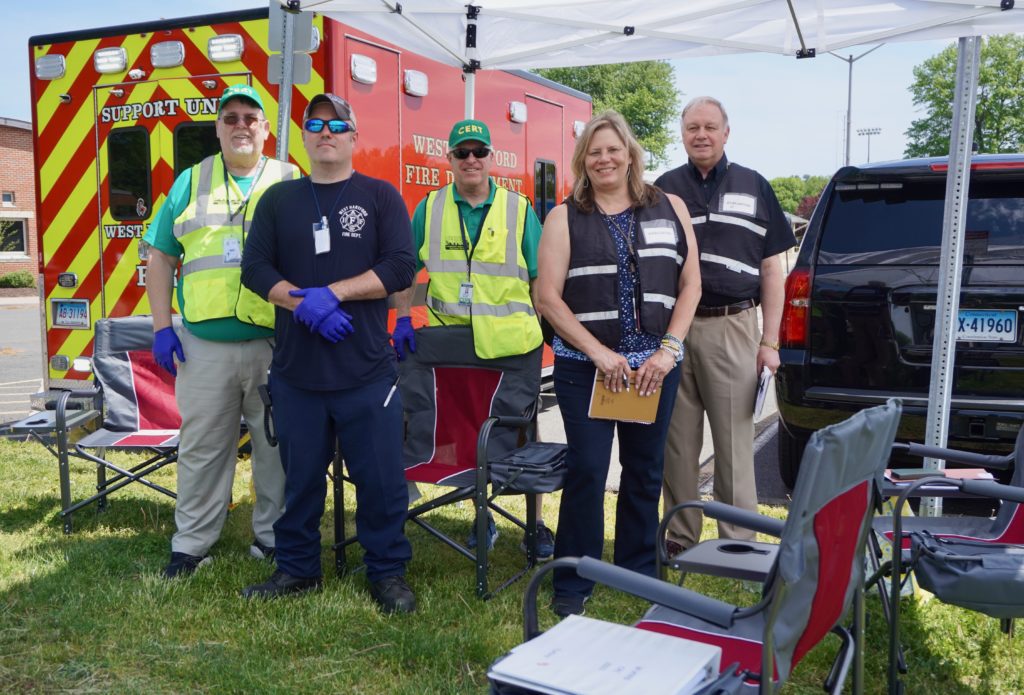
CERT members prepare to greet evacuees and direct them. West Hartford Host Community Reception Center Drill. May 13, 2023. Photo credit: Ronni Newton
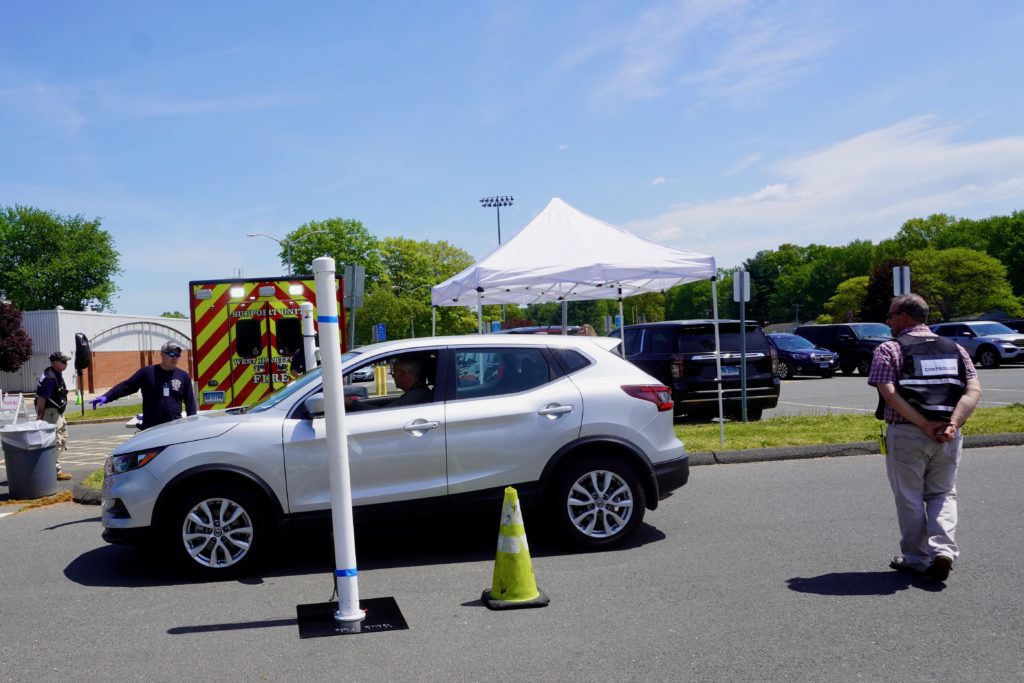
The first “evacuee” vehicle arrives at the Community Reception Center and the machinery determined that it was clean. West Hartford Host Community Reception Center Drill. May 13, 2023. Photo credit: Ronni Newton
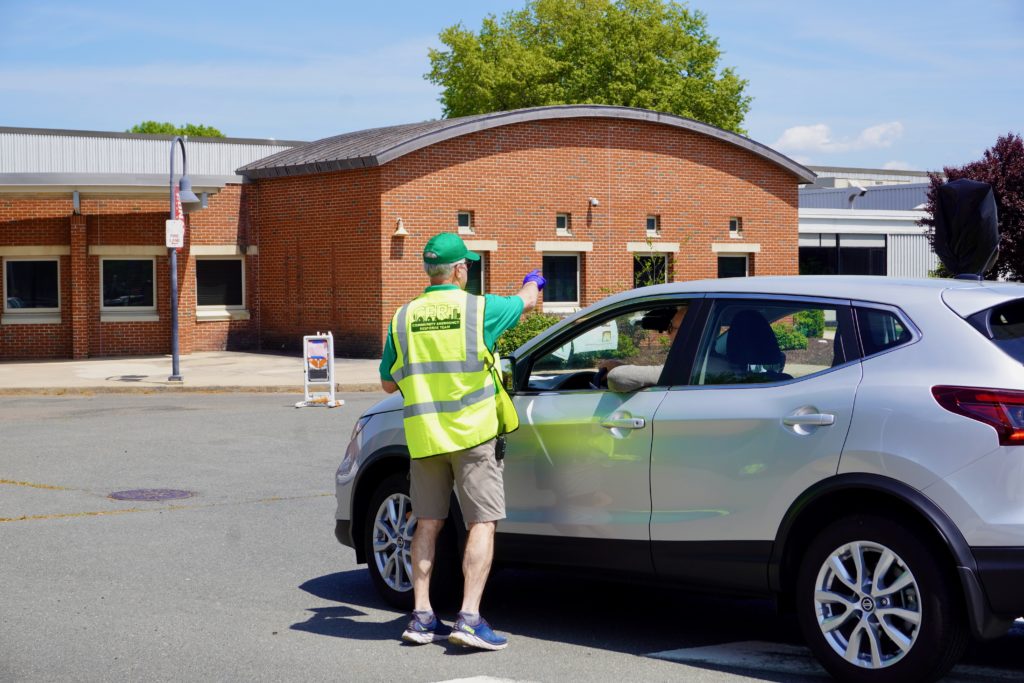
CERT member Tom Proietti directs an “evacuee” who arrives at the Community Reception Center during Saturday’s drill. West Hartford Host Community Reception Center Drill. May 13, 2023. Photo credit: Ronni Newton
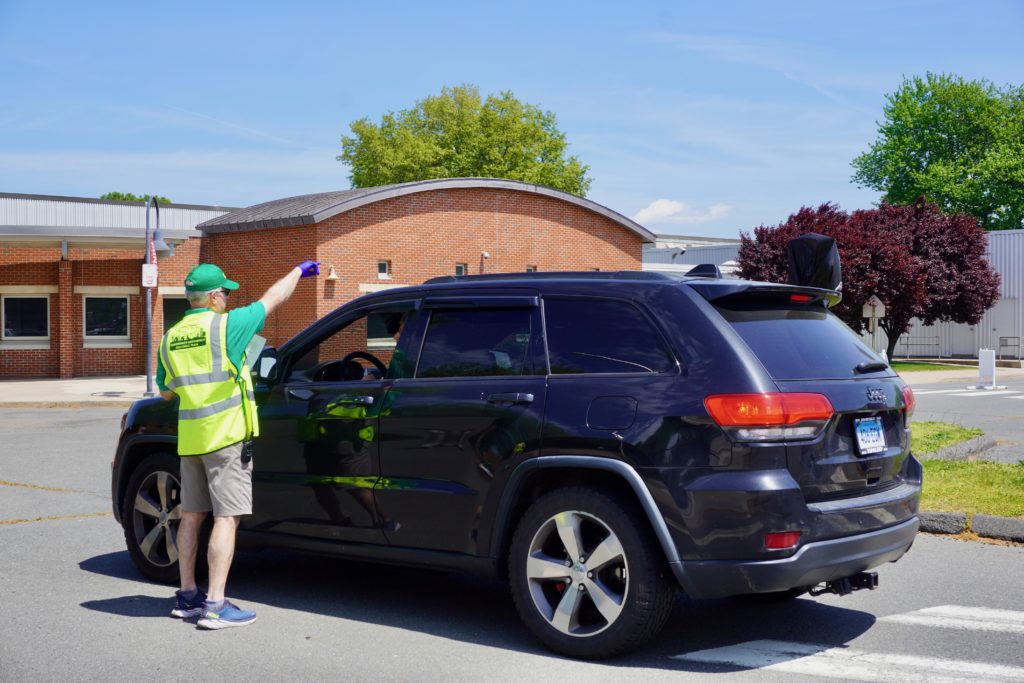
CERT member Tom Proietti directs an “evacuee” who arrives at the Community Reception Center during Saturday’s drill. West Hartford Host Community Reception Center Drill. May 13, 2023. Photo credit: Ronni Newton
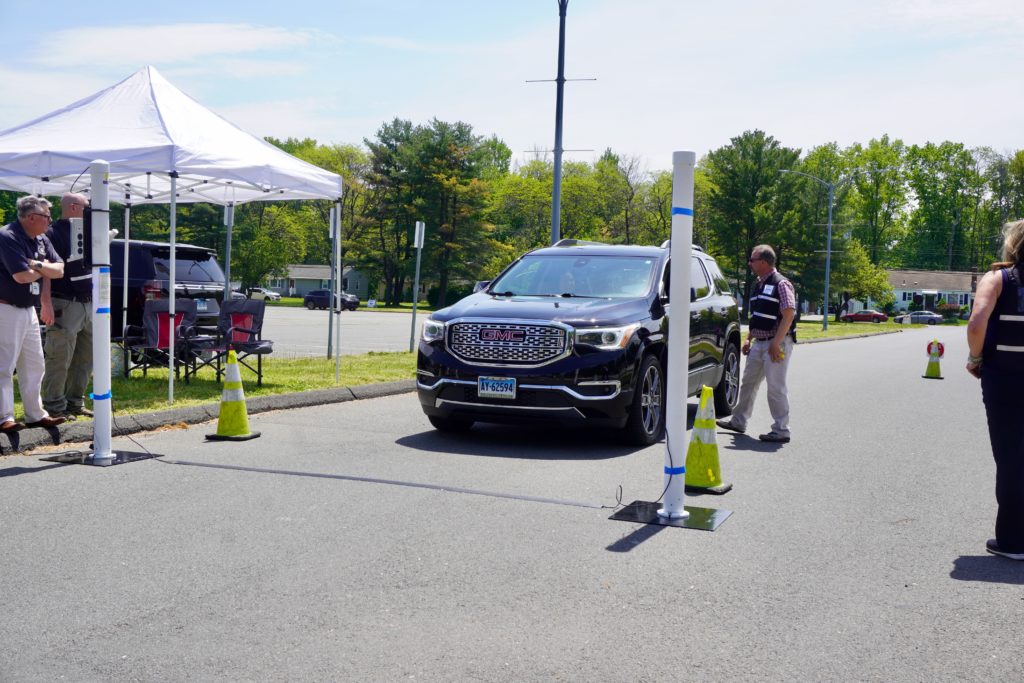
A vehicle arrives at the checkpoint for the Community Reception Center where a sensor will determine if the vehicle is clean or contaminated. West Hartford Host Community Reception Center Drill. May 13, 2023. Photo credit: Ronni Newton
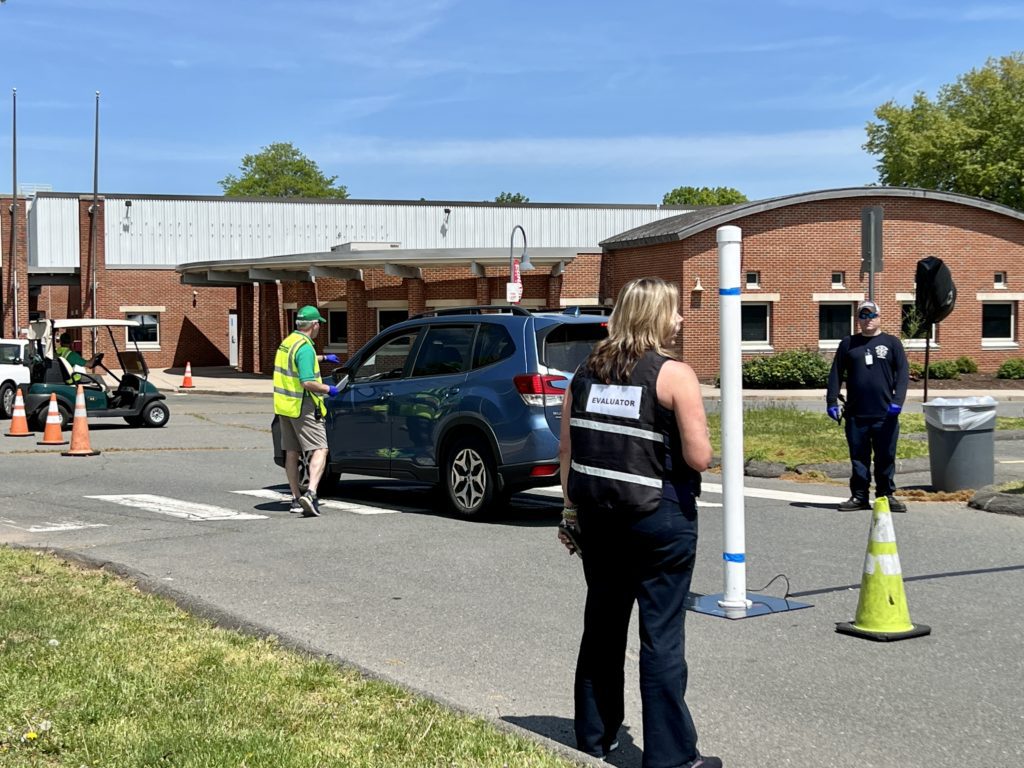
CERT members greet “evacuees” and direct them where to park depending on whether or not they register levels of contamination. West Hartford Host Community Reception Center Drill. May 13, 2023. Photo credit: Ronni Newton
Like what you see here? Click here to subscribe to We-Ha’s newsletter so you’ll always be in the know about what’s happening in West Hartford! Click the blue button below to become a supporter of We-Ha.com and our efforts to continue producing quality journalism.



